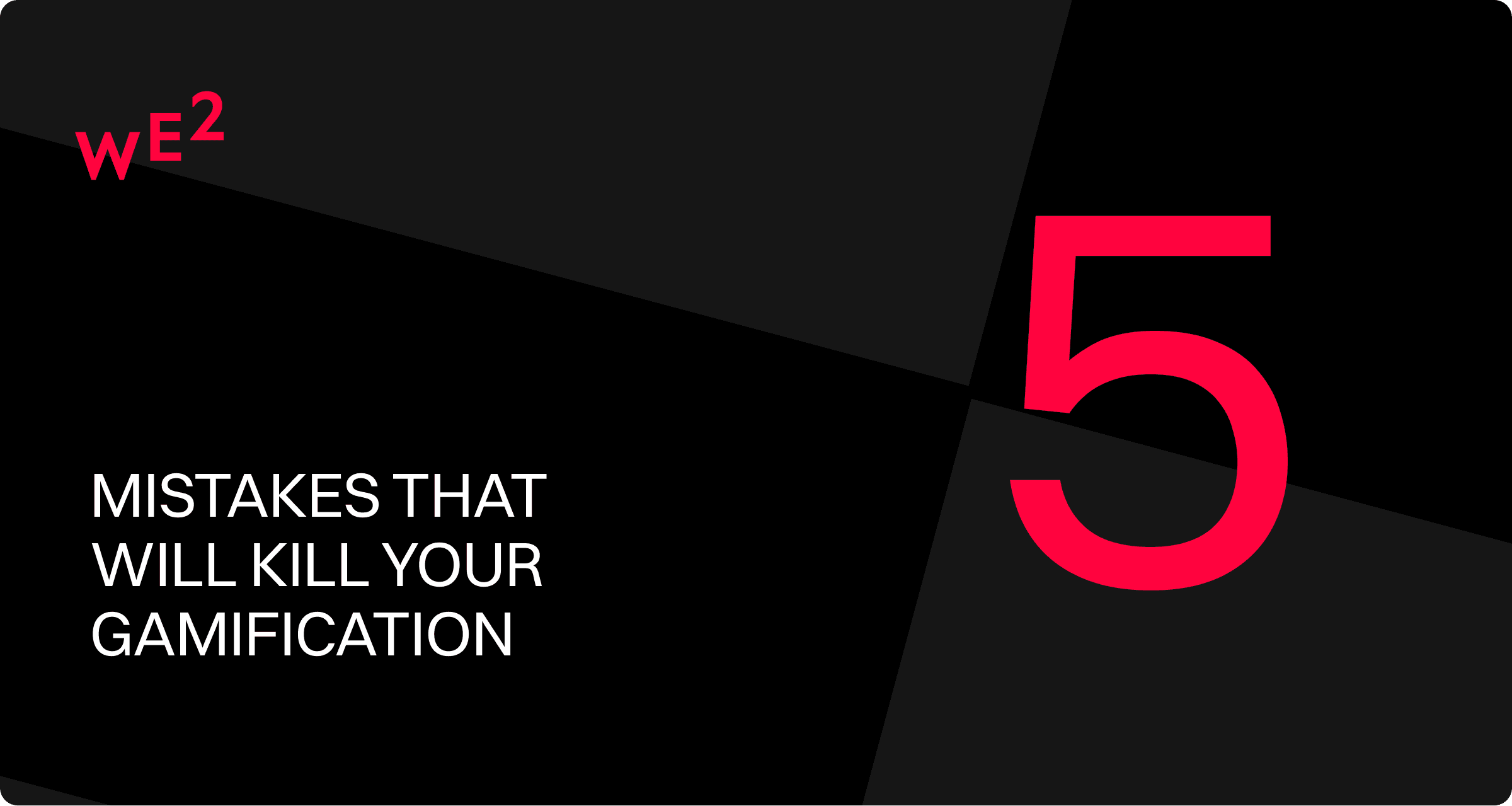
09.09.2025
5 Mistakes That Will Kill Your Gamification and How to Avoid Them
Gamification makes brand interactions more fun and memorable. But it’s not just about playing for the sake of play—it’s a smart way to hit real business goals. Unlike full-scale games built only for entertainment, gamification adds playful elements to everyday contexts—like education, marketing, or customer service—to boost motivation, retention, and engagement.
So, why should businesses care about gamification? Because it can:
- Build stronger brand loyalty
- Drive new user growth and activate existing audiences
- Increase lifetime value by improving retention and repeat actions
- Make campaigns and promotions more visible
- Encourage specific behaviors—from sign-ups to purchases
But here’s the catch: gamification only works if done right. Even the best ideas can flop when the basics are ignored. In this article, we’ll break down the five most common mistakes—and how to avoid them.
Mistake #1: Skipping the Goal
Gamification is trendy, and the word itself sounds impressive. So why not throw a few game elements into your project? Just don’t worry too much about the actual goal.
Launching a loyalty program for a grocery store? Great! Pick a popular mechanic—like “Grow a Tamagotchi.” It’s fun, nostalgic, instantly recognizable. Who cares if it’s not tied to your task? The wow effect is all that matters, right?
Here’s the reality:
Gamification isn’t just a shiny add-on. It should serve a clear business objective—whether that’s educating users, building loyalty, driving engagement, or increasing average spend. Without a specific goal, even the flashiest game turns into empty entertainment.
Success Story: Diagnosing a Rare Disorder
One pharmaceutical brand gave us a challenge: raise awareness of a rare genetic disease among doctors and help them sharpen diagnostic skills. The condition was so uncommon that it was often mistaken for other illnesses.
Our solution: a gamified “mini-quest” in clinical reasoning. Doctors were shown four patient profiles, but only one had hereditary angioedema. They had to gather patient history, ask questions, compare symptoms, and identify the correct case.
It wasn’t just a test—it was an engaging quest. The game pulled doctors into the process, structured their knowledge, and trained their ability to spot rare diseases faster and more accurately. As a result, specialists not only remembered the key symptoms but also began considering this condition earlier in real-world diagnosis.
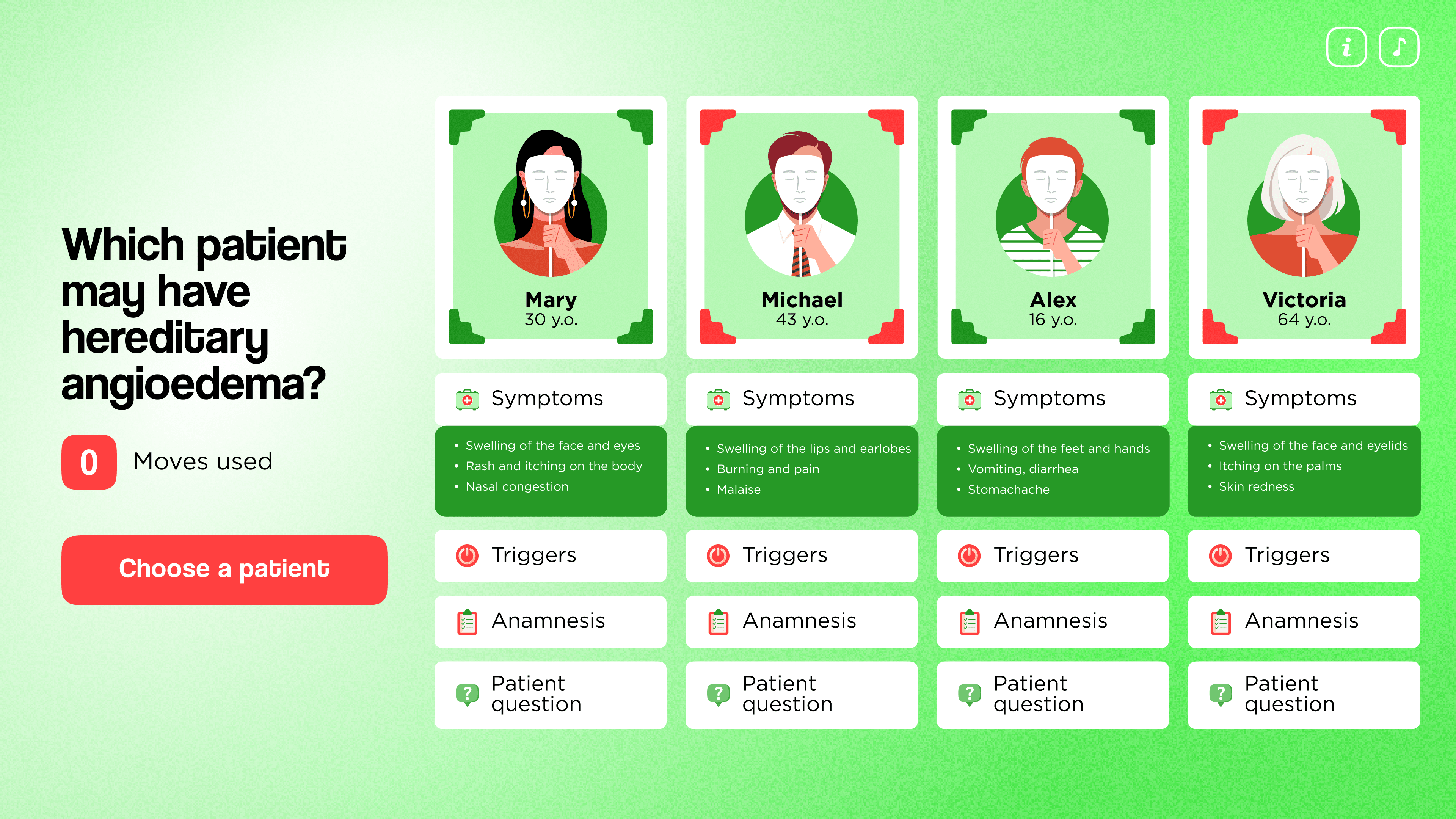
Mistake #2: Ignoring Your Audience
A doctor, a teenager, and an accountant all want the same thing in a game, right? Throw in a runner, some anime characters, sparkles, and bonus boxes—everyone will love it. No need to think about different interests, habits, or expectations. Just make it look like a popular social media game.
Here’s the reality:
One-size-fits-all gamification usually fails. Users quickly ask: “Why do I need this 4th level?” or “What’s the point of a hero skin?” If the experience doesn’t feel designed for them, they tune out.
Gamification only works when it matches the audience’s needs and context. To get it right, you need to know:
- Who are they?
- What’s their gaming background?
- What triggers their emotions, excitement, and curiosity?
Tone, visual style, mechanics, even the font size—all should be tailored to the user.
Fun fact: internal research from one e-commerce project showed that gamification primarily engaged housewives aged 30–45—not gamers or teenagers, but an audience that values clarity, purpose, and a touch of pleasant excitement over complex game rules.
Successful Case: Electronics for IT Specialists
For a major IT company, we designed a game about sorting emails. Before choosing the style and mechanics, we ran a mini-research: studied which games attract users, which aesthetics they prefer, and what tone of voice they use when communicating with colleagues.
The insight? About 80% of employees played games in their free time—many loved retro styles and the vibe of 2000s electronics. So we leaned into nostalgia:
- Styled the interface as an old-school mailbox
- Used pixel graphics, console vibes, and 8-bit effects
- Let users create their own nicknames
- Added a leaderboard for a competitive edge
The result: high engagement and employees asking for more. The secret? We didn’t guess what the audience wanted—we asked, and then built it for them.
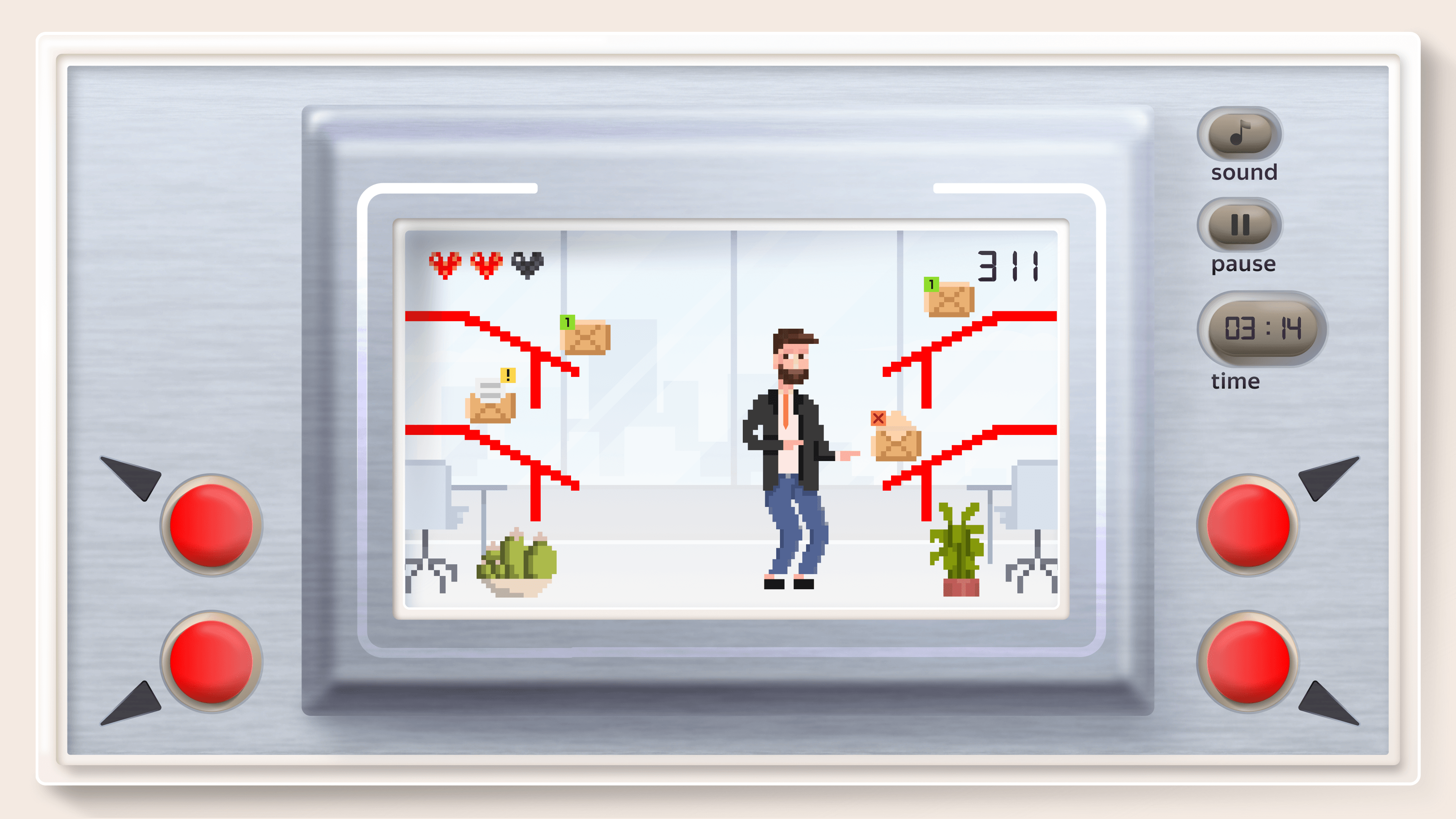
Mistake #3: Not Explaining the Mechanics
Launching a game? Congrats! But don’t skip the basics. If you think players will figure it out on their own, you’re in trouble.
Leaving users to guess what the bar in the corner means, why they’re collecting balls, or why a robot suddenly needs energy isn’t fun—it’s frustrating.
Here’s the reality:
Even the simplest game needs a clear start. If users aren’t told what to do and why to make an effort, they’ll leave. Not because gamification is bad, but because the developers failed to explain the value and rules. If you don’t engage the player at the very beginning, the funnel will collapse right at the first screen.
The formula is simple:
Clear entry point + Simple mechanics + Motivation = Engagement
What to do:
- Show how to play with quick hints, animations, or a short onboarding
- Explain why finishing the game matters—whether it’s for a prize, a bonus, a score, or a personal benefit
- And most importantly: if your audience isn’t made up of gamers, apply simple and intuitive mechanics. Familiar formats work better than overly creative ones that need to be decoded.
Fun fact: teams often try to make gamification really interesting and complicate the scenario: adding extra levels, point systems, or layered logic. As a result, the game drags on or feels too hard for an ordinary user—especially if motivation was weak to begin with.
Morale: when chasing the gaming process, don’t forget about the business goal and don’t extend the user flow if it’s not necessary. Every extra step risks a churn rate increase and the loss of valuable users. As a rule, the task is not to “make them play” endlessly, but to lead them to the finish and give a reward they’ll definitely use after such an engaging brand experience.
Successful case: Dating App–Style Instruction
In one project, we used an animated tutorial inspired by dating apps to explain a simple swipe-left/swipe-right mechanic. The onboarding included:
- Brief text
- Clear wording
- Visual cues with screen examples
- Motivation (in this case, a rare disorder memo)
From the very first screen, users understood how to play, why it mattered, and what they’d get in the end.
The results:
- 89% of users started the game (thanks to the simple guide)
- 64% completed it
- 31% of participants went back from the final screen to the start for a second try
When the mechanics are clear and the motivation is explained from the very beginning, users don’t need to put in extra effort to understand. They just start playing and finish with interest, which boosts campaign effectiveness.
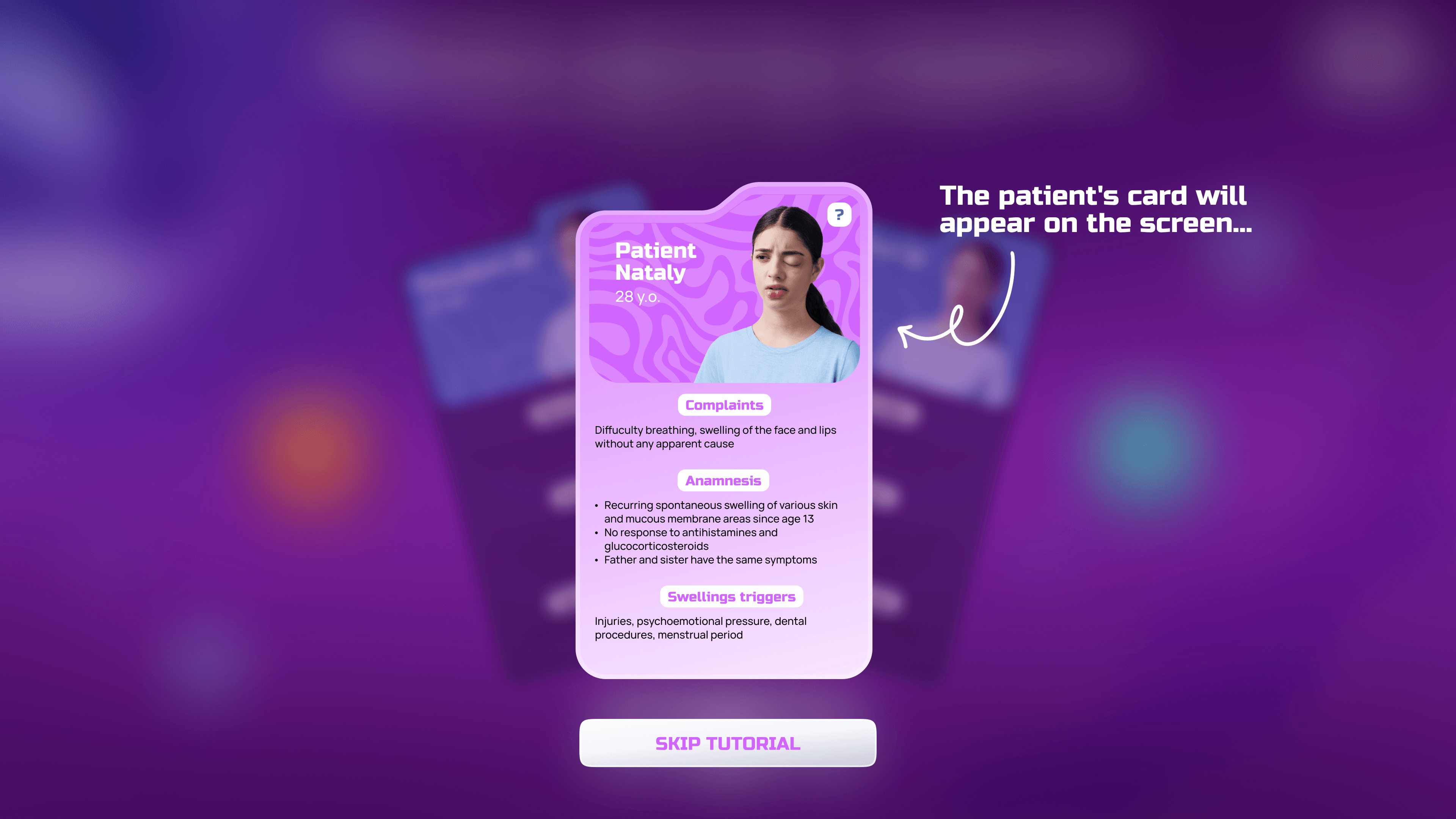
Mistake #4: Using a Popular Mechanic
Gamification? Sure—let’s pick something everyone knows, like “Dress the character.” Who hasn’t styled a Barbie or customized an avatar?
Sounds fun, but here’s the problem: what if you’re promoting an exam prep course or a line of household cleaners? Dressing up a teddy bear in gloves and an apron may be cute, but it has nothing to do with your product—and it won’t move the needle on sales.
Here’s the reality:
Just picking a popular mechanic isn’t enough. In fact, it can hurt if the experience feels random or irrelevant. Strong gamification is always tied to your brand and context. The best mechanics:
- Highlight the key message of your product or campaign
- Immerse users in a story connected to your brand
- Build associations through visuals and storytelling
- Spark emotions that stay with users long after the game ends
Successful Case: Create Your Own Easter Cake
A national retail chain launched a seasonal line of Easter cakes, each with unique flavors and decorations. We took the familiar “Dress-Up” mechanic and gave it a twist: instead of clothes, users could choose icing, sprinkles, and fillings to design their own cake.
The best part? They could buy their personalized cake in-store, not just save it online.
This direct link between the game and the product turned engagement into real demand. Sales grew, interest in the line spiked, and the mechanic worked—not because it was trendy, but because it was adapted to the brand’s actual business goal.
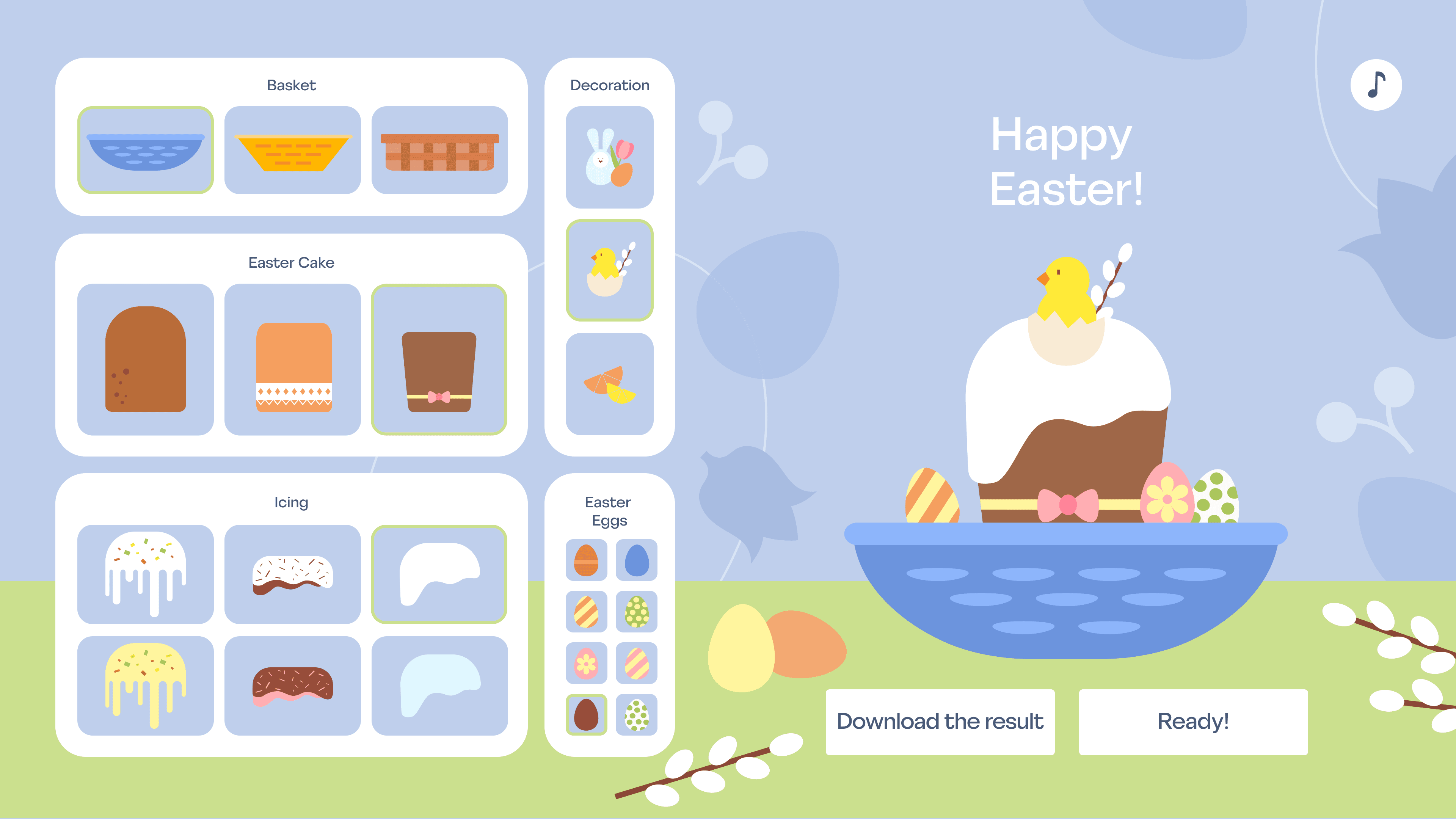
Mistake #5: Not Tracking Analytics
You’ve launched the game—great job! Now let it run on autopilot. Who cares how many users dropped off, or if 80% couldn’t click “Next” because the button froze?
Track analytics in real time to catch a bug? No need—we’ll fix it in the next release. True gamification enthusiasts believe in magic: if the mechanic is beautiful, it’ll definitely work. Or almost work.
Here’s the reality:
Deep analytics is not an option—it’s a crucial part of any gamification project. It shows what really works and what doesn’t, where users engage and where they get bored and quit (or when everything freezes). Data helps turn hypotheses into proven strategies and fix funnel drop-offs on the spot. When launching gamification, it’s crucial to track everything that matters:
- Game start, screens, every step and click
- Technical errors and crashes
- Number of re-entries and session duration
- Promo code redemptions
And don’t forget technical screens. If the server crashes or a page won’t load, users shouldn’t see a blank screen. They should see a friendly message like “Oops, something went wrong. Try again later.” That state must be tracked, too.
This isn’t “extra work”—it’s the foundation for optimization and growth. Even the most beautiful mechanic can quietly fail if you don’t measure it.
Successful Case: Analytics in a Cosmetic Retail Giant
For a leading cosmetics chain, we ran a gamification campaign and then dug deep into the funnel—from the first screen all the way to promo code redemption.
With analytics in place, we could:
- See which mechanics kept users engaged
- Spot the most effective scenarios
- Identify where traffic dropped off
- Capture best practices for the next campaign
After adding technical monitoring, we could instantly detect errors, see where users got stuck, and take action before conversion dropped. Without this kind of tracking, more than 30% of traffic would have been lost—and you’d never even know about it.
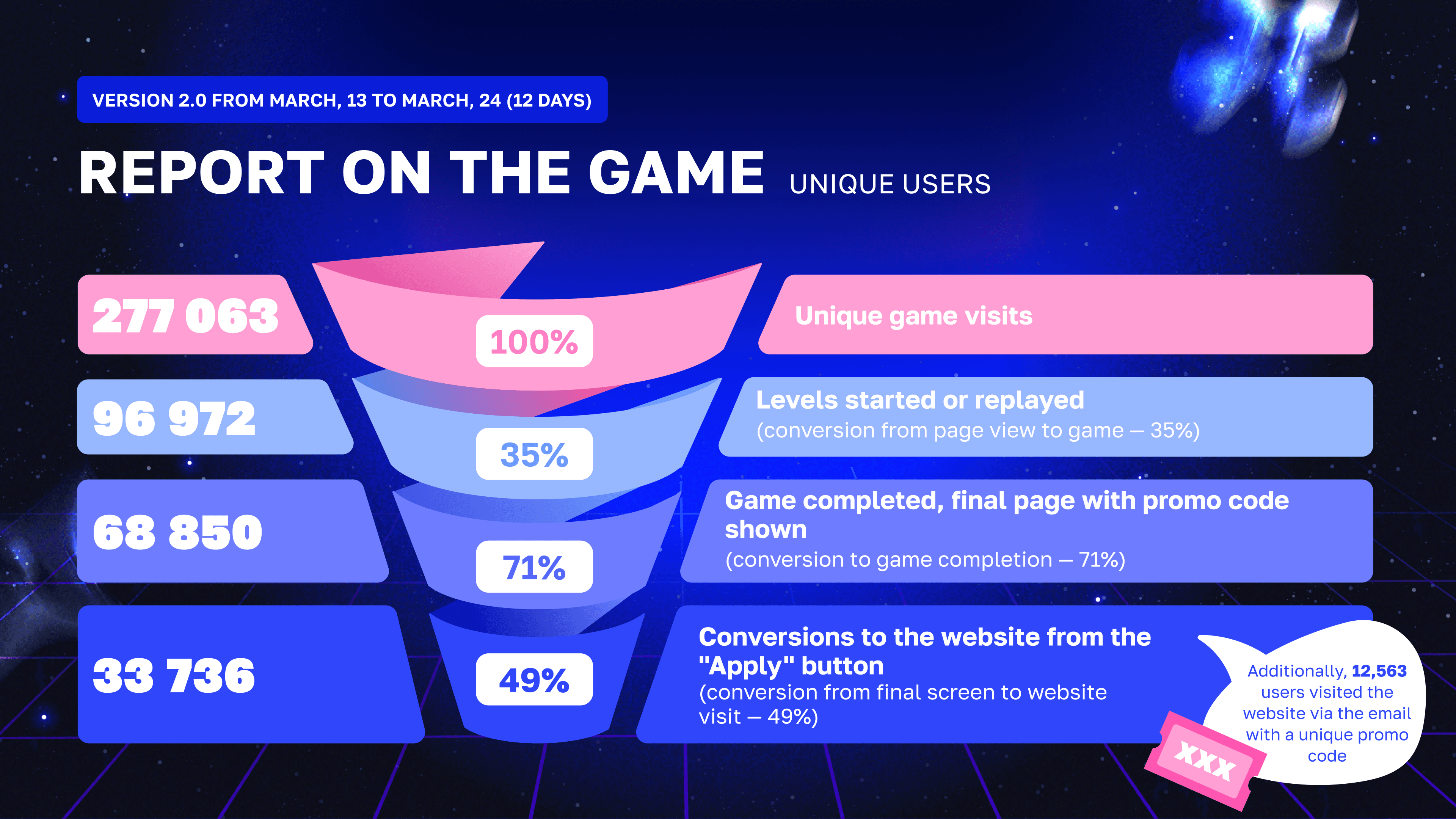
Metrics before technical screens integration
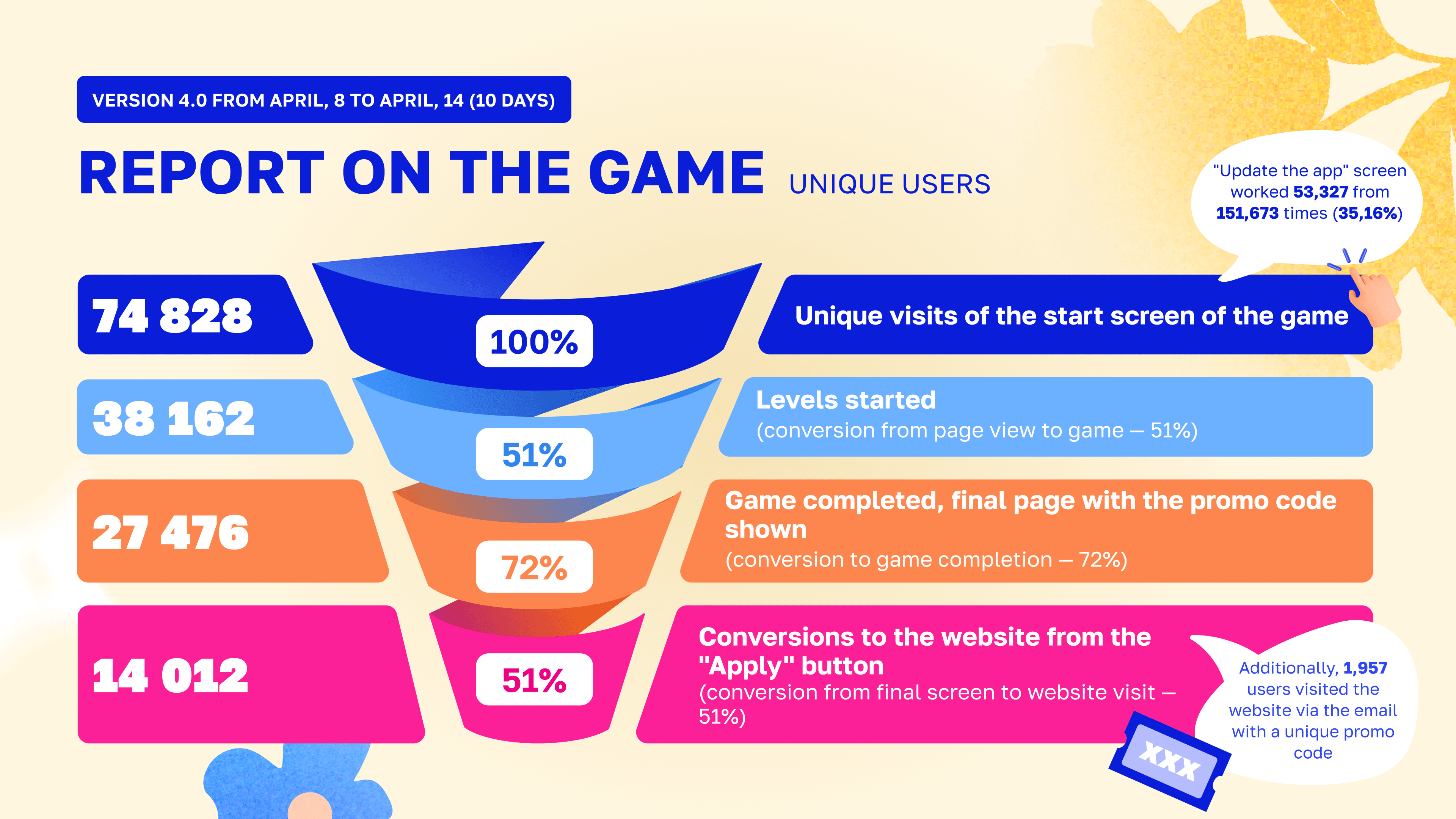
Metrics after technical screens integration
Summary
Behind every project, there should be more than a nice idea—there should be a clear plan: why you’re doing it, what business goals it supports, and how you’ll measure success.
Done right, gamification can drive engagement, build loyalty, reactivate dormant users, and even boost sales. But it only works when used wisely:
- Set clear goals
- Know your audience
- Track the right metrics
Do that, and your game won’t just entertain—it’ll deliver real business impact.

READY TO START?
Fill out the form, and we’ll reach out shortly to discuss your project.

